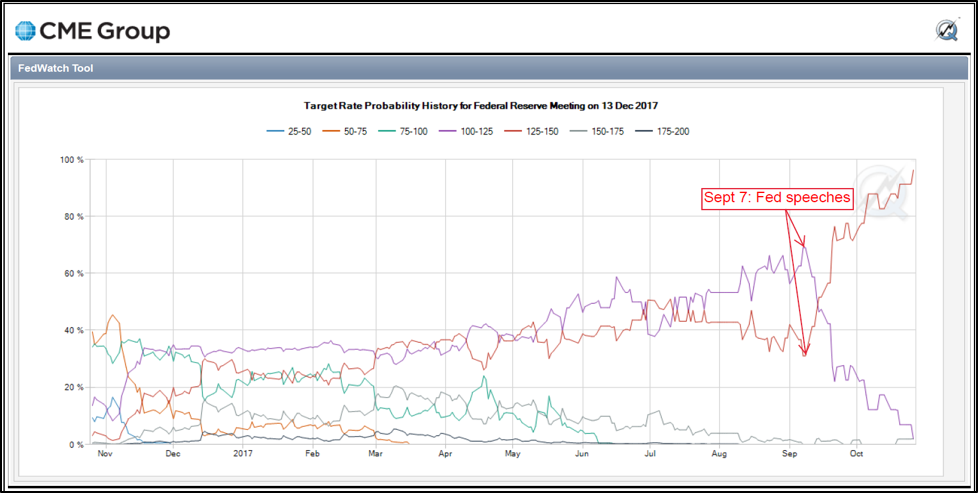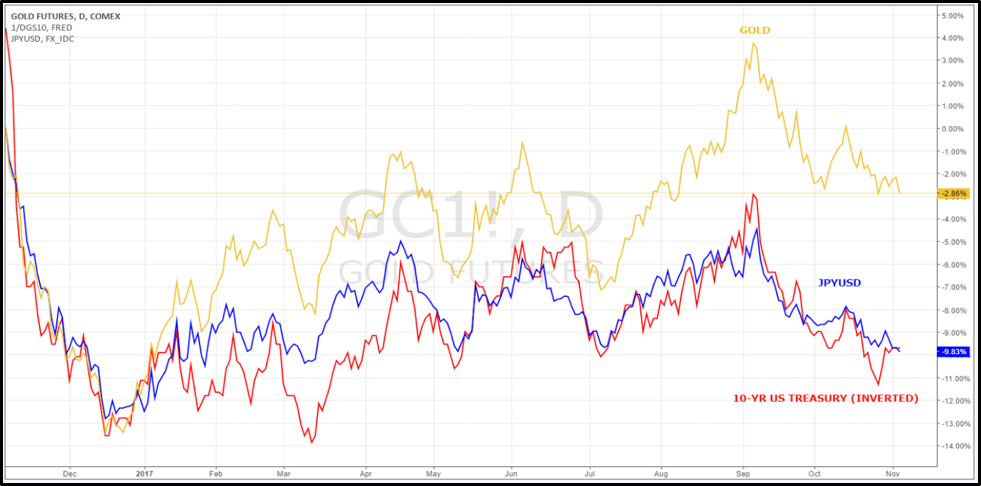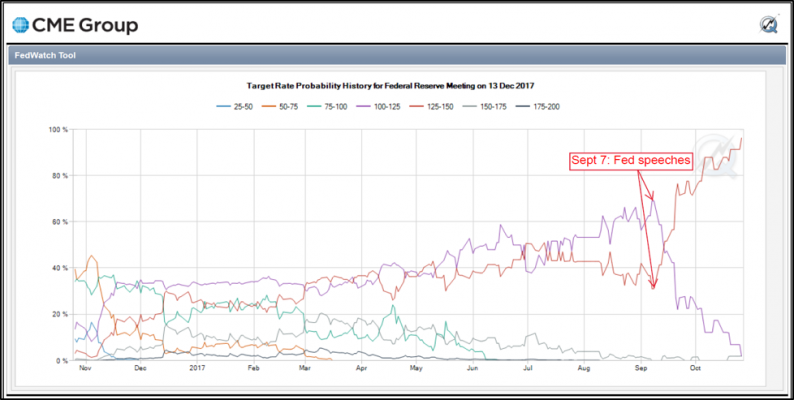In the absence of a major bullish catalyst, with interest rate expectations on the rise and stock market indices at or near record highs globally, gold has been consolidating since the intermediate high posted in early September. That high, set just after speeches by the Fed’s Mester, Dudley and George and immediately prior to the beginning of the central bank’s blackout period on September 9th, incidentally coincided with lows on the US dollar and 10-year Treasury yields. Since then, fixed income markets moved from pricing a 69% probability of no change and 31% chance of another hike by the end of the year to almost fully pricing in a 25-basis point move in December (i.e. 96.7% probability of a target rate of 1.25%-1.50% in December).

Source: CME
True to its strong negative correlation with government bond yields and the currency (especially with USDJPY) at the moment, the rise in rates and ensuing dollar strength put pressure on gold prices. These correlations, along with short-term technicals, suggest that rising interest rates and a recovery in the dollar may continue to push pressure on gold prices in the short-run.

Source: www.tradingview.com
NEW FED CHAIR AND A FLATTENING YIELD CURVE
The intense speculation about the nomination for Fed Chair in recent weeks has finally come to an end as President Trump officially nominated Jerome Powell. Janet Yellen and John B. Taylor were also seen as leading contenders among the purported five finalists which also included Kevin Warsh and Gary Cohn. The consensus view was that a Powell or Yellen nomination would draw less of a negative market reaction given the potential for continuity, whereas Warsh and particularly Taylor winning would have sparked fears of a more hawkish Fed.
In particular some were concerned that Taylor, favored by Vice President Mike Pence, if selected would apply his eponymous rule which by some estimates would currently place r* (the so-called natural or equilibrium rate of interest) above 3.5%. That’s considered hawkish compared to the 2.3%-3.5% in the September dotplot and Fed futures pricing of around 2.00% as a peak for the current tightening cycle in Q2 2020.












Leave A Comment